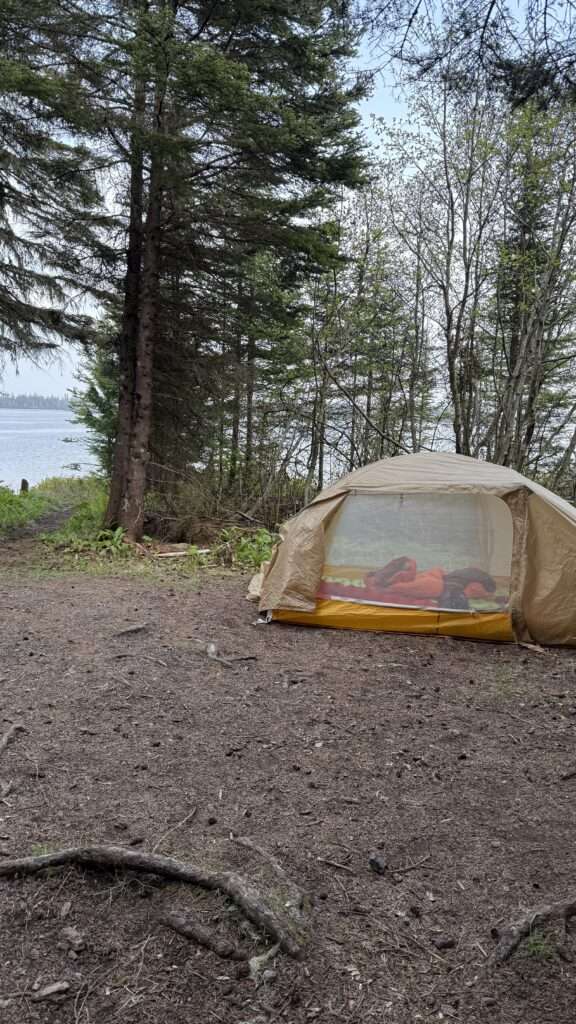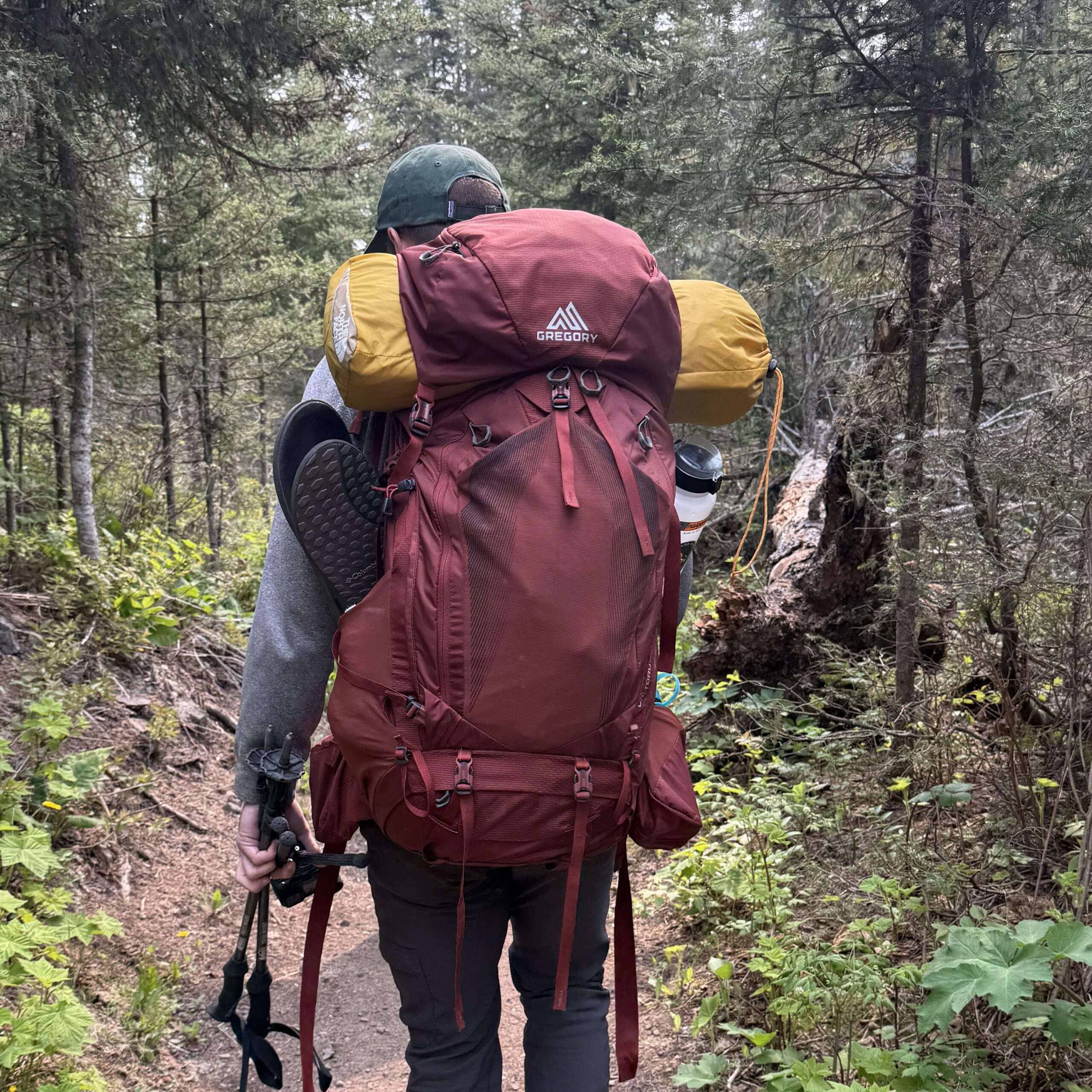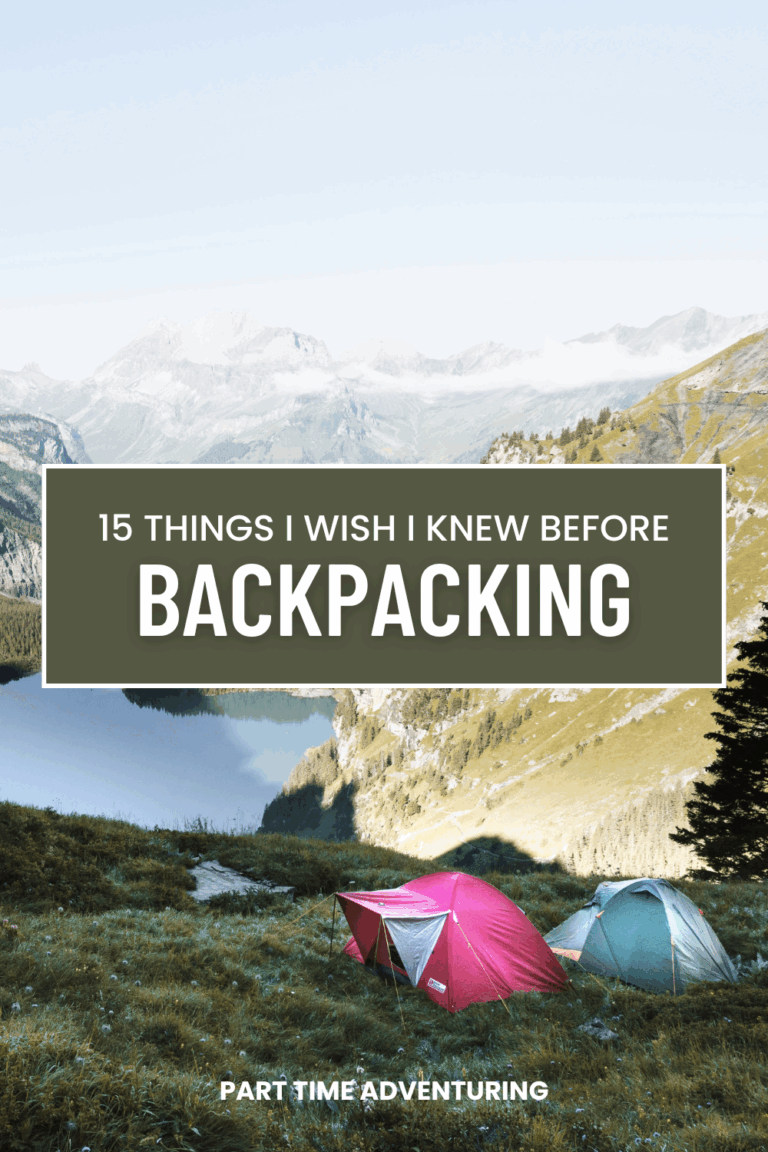Your first backpacking trip is unforgettable — but it’s also where you learn everything the hard way. No matter how many gear lists you read or videos you watch, some lessons just hit different when you’re sore, sunburned, and hungry at mile 10. We just finished our first backpacking trip and here are the top things we have learned the hard way.
1. You Don’t Need the Most Expensive Gear
Ultralight setups are great, but don’t let price tags stop you from starting. There are budget-friendly options that work just fine. Shop secondhand, borrow from friends, or check REI Outlet. One item we purchased was an 8 dollar backpacking stove and it works great, don’t feel pressured to buy a $150 brand name setup
2. Your Pack Will Feel Way Heavier on the Trail
That 28 lbs in your living room? It’ll feel like 50 once you’re climbing. Do a local shakeout hike with your full pack to understand how it carries and what you can ditch. The heaviest items should be in the middle of your pack and as close to your back for the best carrying setup. Sleeping bag and pad should go in the bottom.
3. Test Your Gear Before You Hit the Trail

Don’t wait until you’re miles in to figure out how your gear works. Set up your tent at home, practice using your stove, and pack your backpack several times. Take a loaded pack on local hikes to spot discomfort or issues early—this helps avoid frustration and gear failures on the trail.
4. Blisters and Chafing Are Not a Joke
Even experienced hikers get blisters when the pack weight climbs. Break in your shoes ahead of time, and always carry blister care—Leukotape beats moleskin every time. Worried about chafing? Body Glide works wonders. And don’t underestimate the power of extra socks—dry feet are happy feet.
5. Water Filtering Isn’t Always Clear (Literally)
Filtered water can still be tea-colored from tannins — and that’s normal. We use Epic water filters for easy drinking water from bottles and Sawyer squeeze filter for fixing up our backpacking meals.
6. Layering is Everything
Ditch the cotton. Stick to wool or synthetic layers. You want a good base layer, a midlayer (like a puffy), and a rain shell. Weather swings hard in the backcountry. We went on our trip with no base layers or puffy coat and those items are now on our must buy list.
7. Campsites Aren’t Always What You Expect
That “perfect” campsite on your map may be sloped, muddy, or taken. Arrive early and be flexible. Look for flat, elevated spots and follow the 200 ft rule from water sources.
8. Your First Night Might Be Uncomfortable
You probably won’t sleep well — weird noises, hard ground, or nerves can all mess with you. That’s okay. Bring earplugs, do your nighttime routine, and expect it to get easier. We slept way better on our second night versus the first.
9. Going to the Bathroom in the Woods Takes Practice
Learn how to dig a cathole properly (6-8″ deep, 200 ft from water). Bring a trowel, wet wipes, and hand sanitizer. A pee cloth like Kula Cloth is a game-changer for women.
10. Don’t Skip Conditioning
Backpacking uses muscles differently than day hiking. Train with a loaded pack, strengthen your core and knees, and do stairs or elevation hikes when you can.
11. Sleeping Bags Lie About Their Temperature Ratings
Sleeping bag ratings aren’t always accurate, especially cheaper bags. Lab tests don’t match real conditions, so a 20°F bag might feel cold at 30°F. Look for the comfort rating, check reviews, and consider layering to stay warm.
12. A Thicker Sleeping Pad Is Worth the Weight
Your pad is crucial for warmth and comfort. Look for an R-value of at least 3. Foam pads may be lighter, but inflatable ones provide real rest and insulation. To go along with our inflatable pads we purchased this tiny air pump and it is way faster than manually blowing it up
13. Learn How to Load and Adjust Your Pack

Heavy items should sit close to your spine and mid-back. Use your hip belt properly (it should carry most of the weight) and adjust straps as you hike. A well-packed bag makes a massive difference.
14. Your Feet Will Hurt in New Ways
Even without blisters, your feet can ache for days — sore arches, tired soles, or bruising from long mileage with weight. Use quality insoles, take breaks, and stretch after hiking. Recovery matters.
15. Camp Shoes Are 100% Worth the Space
Your feet will be begging to get out of your boots at camp. Lightweight sandals or foam clogs let your feet breathe, help you move around comfortably, and even come in handy at creek crossings.
Final Thoughts
Backpacking is equal parts challenge and reward. You’re carrying your home, and food on your back — and that comes with a steep learning curve. But with the right prep and mindset, every trip gets easier, more comfortable, and more fun.
Hopefully this list helps you avoid the rookie mistakes I made and hit the trail feeling just a little more prepared. Be sure to check out our other blog posts on our travels!


